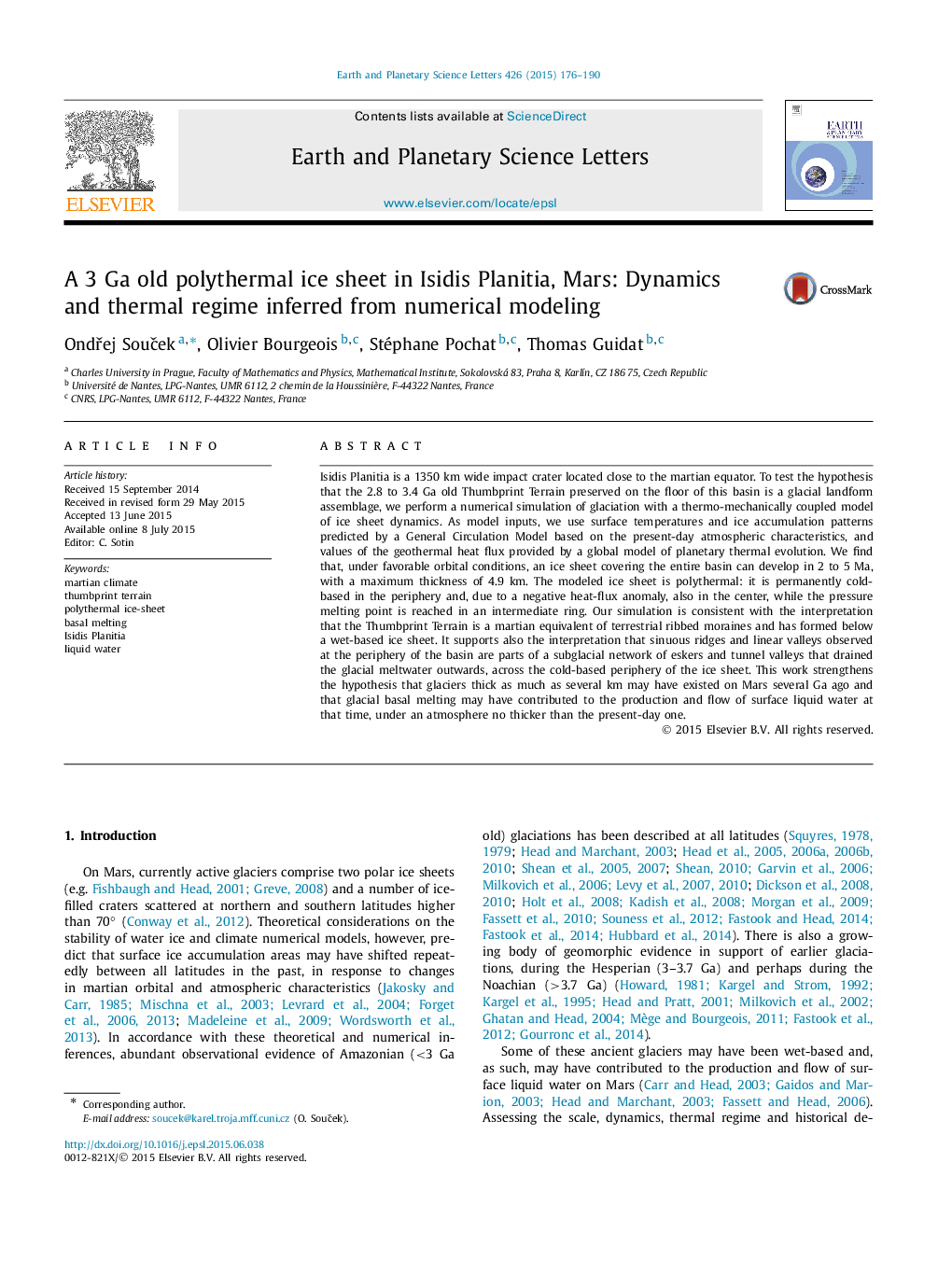| کد مقاله | کد نشریه | سال انتشار | مقاله انگلیسی | نسخه تمام متن |
|---|---|---|---|---|
| 6428130 | 1634730 | 2015 | 15 صفحه PDF | دانلود رایگان |

- We numerically simulate martian paleo-ice sheet from topographic, climatic and geothermal inputs.
- Simulated dynamics and basal thermal regime are consistent with 3 Ga old landform assemblage.
- Thick atmosphere is needed to explain neither glaciation nor presence of liquid water.
Isidis Planitia is a 1350 km wide impact crater located close to the martian equator. To test the hypothesis that the 2.8 to 3.4 Ga old Thumbprint Terrain preserved on the floor of this basin is a glacial landform assemblage, we perform a numerical simulation of glaciation with a thermo-mechanically coupled model of ice sheet dynamics. As model inputs, we use surface temperatures and ice accumulation patterns predicted by a General Circulation Model based on the present-day atmospheric characteristics, and values of the geothermal heat flux provided by a global model of planetary thermal evolution. We find that, under favorable orbital conditions, an ice sheet covering the entire basin can develop in 2 to 5 Ma, with a maximum thickness of 4.9 km. The modeled ice sheet is polythermal: it is permanently cold-based in the periphery and, due to a negative heat-flux anomaly, also in the center, while the pressure melting point is reached in an intermediate ring. Our simulation is consistent with the interpretation that the Thumbprint Terrain is a martian equivalent of terrestrial ribbed moraines and has formed below a wet-based ice sheet. It supports also the interpretation that sinuous ridges and linear valleys observed at the periphery of the basin are parts of a subglacial network of eskers and tunnel valleys that drained the glacial meltwater outwards, across the cold-based periphery of the ice sheet. This work strengthens the hypothesis that glaciers thick as much as several km may have existed on Mars several Ga ago and that glacial basal melting may have contributed to the production and flow of surface liquid water at that time, under an atmosphere no thicker than the present-day one.
Journal: Earth and Planetary Science Letters - Volume 426, 15 September 2015, Pages 176-190